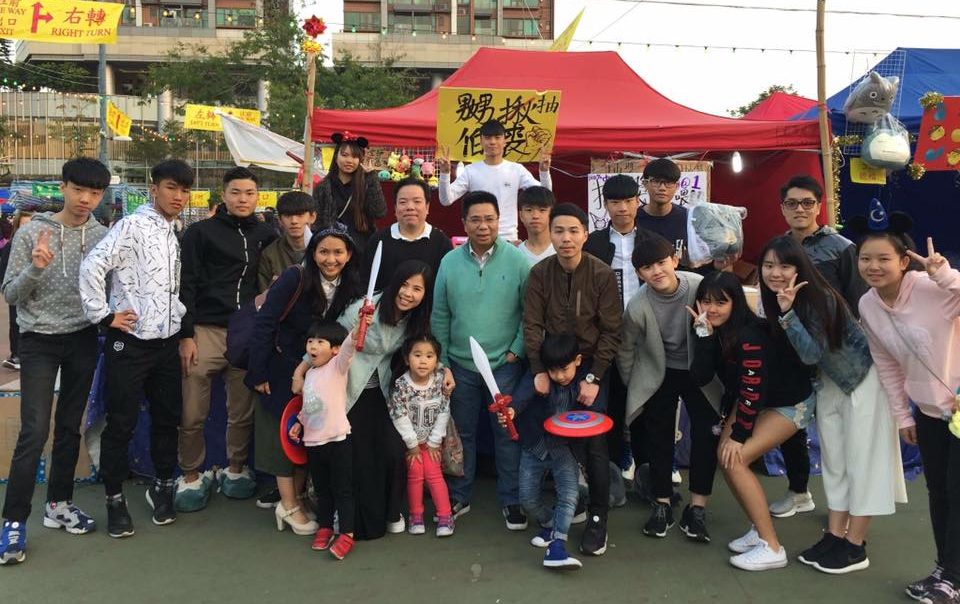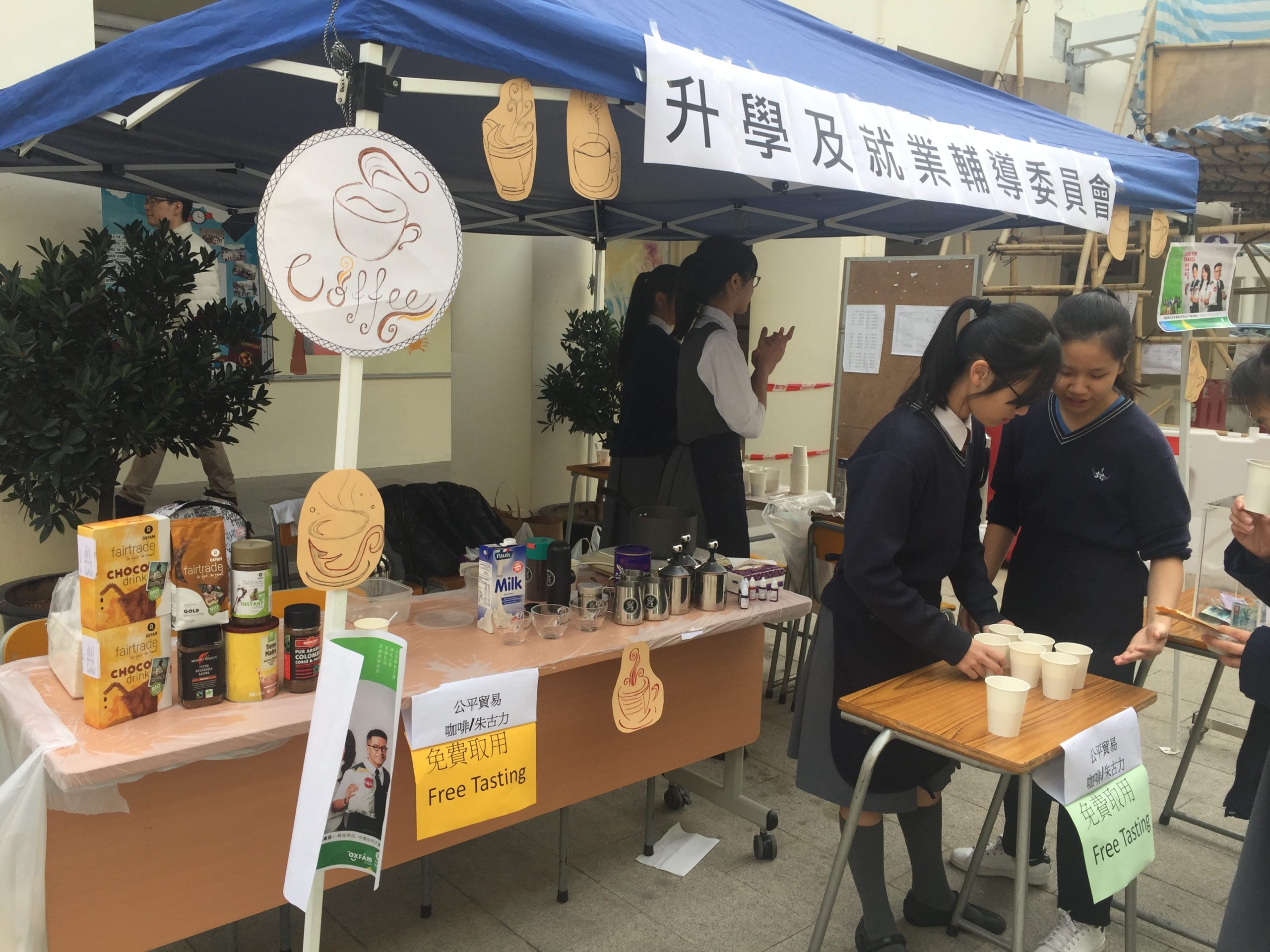Benchmark 5
Student Engagement and Co-creation

1. What good looks like?
Students should be the owners of their career and life development. School should engage and facilitate students to be active CLD activity co-creators as well as their own career path creators.
- School has established an effective mechanism to engage students with support from school personnel/ adults/ peers, in planning, implementing, and evaluating the CLD programmes and activities.
- There are supportive measures1 (e.g., creation of time and space for student-teacher co-creation) to facilitate students’ participation in taking joint actions with school personnel, other adults and peers on career and life development practices in school.
- School should provide opportunities to students to give their feedback/ opinion on the planning of at least one activity related to CLD in their junior and senior forms respectively.
- Students can experience at least one opportunity to extend connections and collaborations with adults (e.g. mentors, Serious Leisure Devotees, parents, alumni) and peers on career and life development, through participating in various forms of CLD programmes/ career-related activities. Students should also be engaged to co-create at least one CLD programme/ related event each year.
- Schools should have a record system to document students’ initiatives/ ideas and action plans on CLD programmes. Alternatively, there should be a channel for students to inform schools of their wishes and needs to co-create CLD programmes.
2. Why this matters?
- By gathering and reviewing students’ feedback/ opinion in response to their career development needs, schools can update CLD policy and provide tailor-made programmes to address students’ needs and concerns.
- School establishes a mechanism/platform to ascertain student-adult partnership and students’ bottom-up participation, which support the development of students’ various competences (e.g. leadership, communication and presentation skills) through students’ co-creation and participation in the CLD programmes.
- Through taking more active role in organising and/ or having shared decision-making for planning, implementing, and evaluating of career-related activities, students’ sense of ownership on their future development would be strengthened.
- By engaging in the co-creating process, students would realize their roles as programme co-creators to explore different sources of CLD information and opportunities pro-actively so as to provide quality activities for their peers. Students can also be aware of their position as owners of their future life pathways to develop responsibility of their future decision making process.
3. Top tips for schools*
PLAN
-
Set up a mechanism to collect CLD ideas and preferences from students or establish a CLD prefect team in the beginning of academic year (e.g. gather students’ voices or preferences on the different pathways and latest career trends they want to have more in-depth exploration, or hold co-meetings with CLD prefects).
-
Communicate and conduct meetings to engage school departments or groups to discuss potential and/ or on-going cross-departmental collaboration on student engagement and co-creation of CLD programme.
-
Ensure students’ and teachers’ feedback is discussed and reviewed through different channels (such as teacher evaluation meetings, feedback forms) to gather feasible ideas to help improve or upscale the existing programmes. (e.g. meeting with students to gather their ideas.)
-
Facilitate students to actively maintain connections with the programme partners (e.g. mentors, Serious Leisure Devotees, parents, alumni) to mobilize connection for future activities.
-
Recruit students who are interested in leading CLD-related projects or activities. (e.g. If school has the CLD prefects club, select and train up potential students to equip them with knowledge and competence to design CLD programme for their peers).
-
Promote the core message & value of CLD or integrate CLD elements in the existing school activities or practices (e.g., career activities, OLE activities, subject learning fairs), to link current activities with student co-creation practice.

IMPLEMENT
- Collect students’ voice (e.g., collect questionnaires from CLD periods, class teacher periods, wholeform activity, assembly) and bring the data to the teacher meetings for discussion and come up with junior and senior students’ preferences.
- Consider different means to recruit potential students to be involved in the CLD activities (e.g. nomination by teachers’ recommendation and students’ voluntary involvement) and prepare them (e.g., equip them with career exploration, programme organising, presentation and leadership skills) to take up active roles in the career-related activities.
- Provide a platform or opportunity (e.g. common time, space through arranged meetings) for CLD prefects or students involved to discuss and exchange ideas in CLD-related activities.
- Provide advice on networking process to facilitate the students to have at least one meaningful encounter to interact with different partners (e.g. mentors, Serious Leisure Devotees, parents, alumni).
- Provide communication channels (e.g. emails, online forms, WhatsApp groups) to collect feedback from different internal and external stakeholders including students and designated staff members.
EVALUATE
- Collect students’ feedback/ evaluation of the meaningful encounters after the encounter or within one week as students’ memories are still refreshed.
- Conduct evaluation meeting with CLD ambassadors or students involved in CLD-related activities to evaluate effectiveness of the CLD programmes, and students’ enhancement of competencies (e.g. debrief students to help students integrate their co-creation learning experiences into their developmental portfolio/ learning profiles or curriculum vitae (CV) for future study and pathway considerations).
- Collect stakeholders’ feedback including alumni, partners, and collaborators and review the implementation of the meaningful encounters after the CLD programmes.
4. Working with partners
- Mentors: Invite mentors from different industries to share the values, attitude, skills, and knowledge regarding their industry characteristics and workplace experiences.
- Serious Leisure Devotees: Connect people who devote into serious leisure from different areas of interest to share personalized experiences to the students.
- Parents: Identify potential parents as a resourceful person to take part in the CLD programmes or share information or experiences, in order to widen parents’ CLD mindset.
- Alumni: Invite alumni as guests to share different
pathway information and experiences.

5. Insights gained from the pilot schools
- Establishment of ‘CLD Prefect Ambassadors’ or CLD club/ committee does help facilitate student engagement and co-creation in school’s CLD provisions.
- Co-creation can be infused in different existing practices (e.g. take lead in OLE activities, ECA activities of subject learning, student leadership training).
- Collect student ideas and voices to conduct CLD-related activities (e.g., alumni sharing, CLD broadcasting programme, student sharing of HKDSE subjects to S.3 students). Students are more motivated to join the activities designed based on students’ choices or preferences, and interests. Student/ peer mentors, CLD prefects, alumni can also be empowered.
- Student co-creation and connection with alumni can help student engage alumni to be significant resources for the career-related activities.
Reference:
Tracy X. P. Zou, Neil C. Mickleborough, Stanley S. M. Ho & Stephen Y. W. Yip (2015). Students as learning experience designers: the
effect of student-driven approaches in a Hong Kong study, International Journal of Pedagogies and Learning, 10:3, 179-193, DOI:
10.1080/22040552.2015.1135497
Notes:
1 Supportive measures: Refer to measures provided by the school for the students and/or teachers, such as the creation of time and space
for student-teacher co-creation; the development of communication platform/channels between students and school personnel/ other
adults/ peers.
